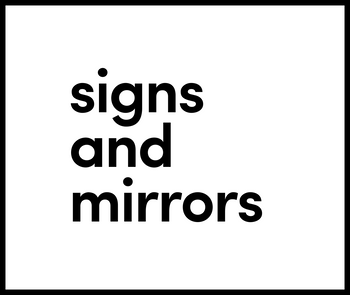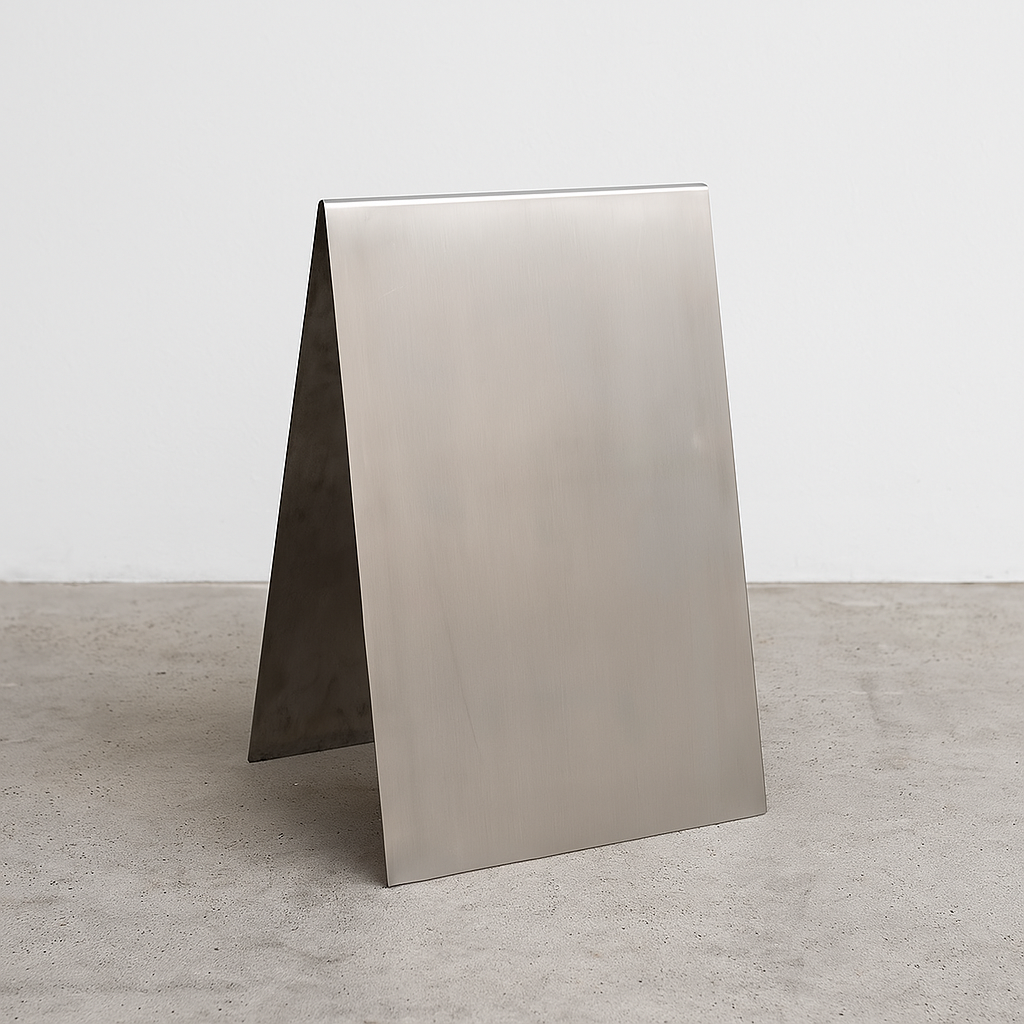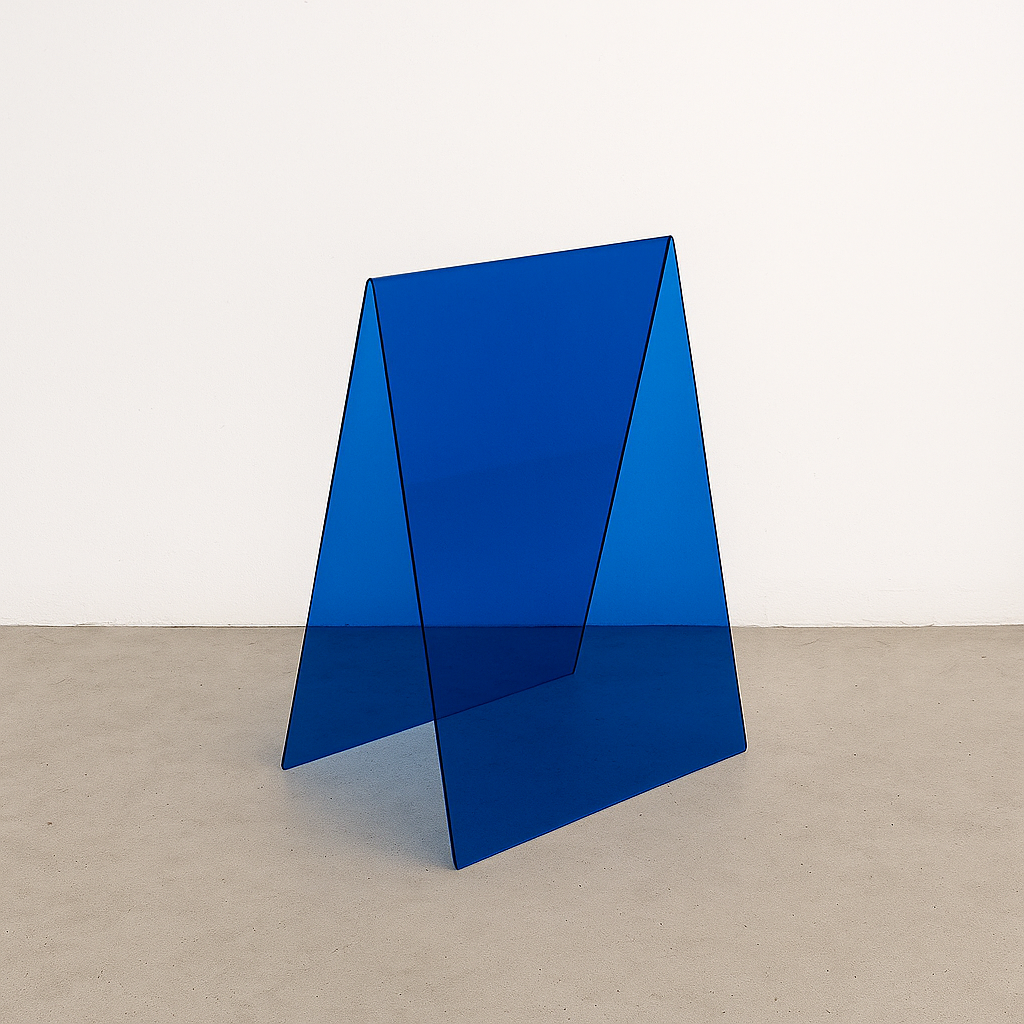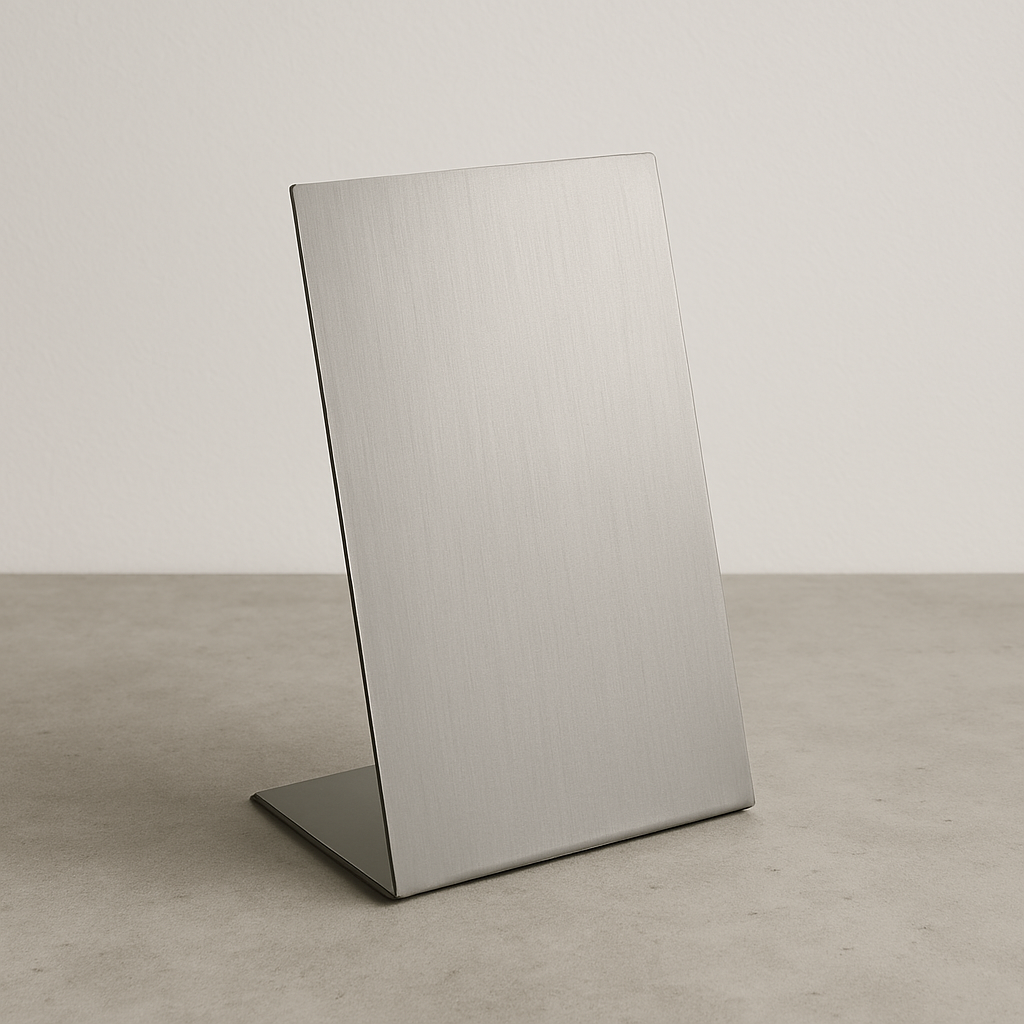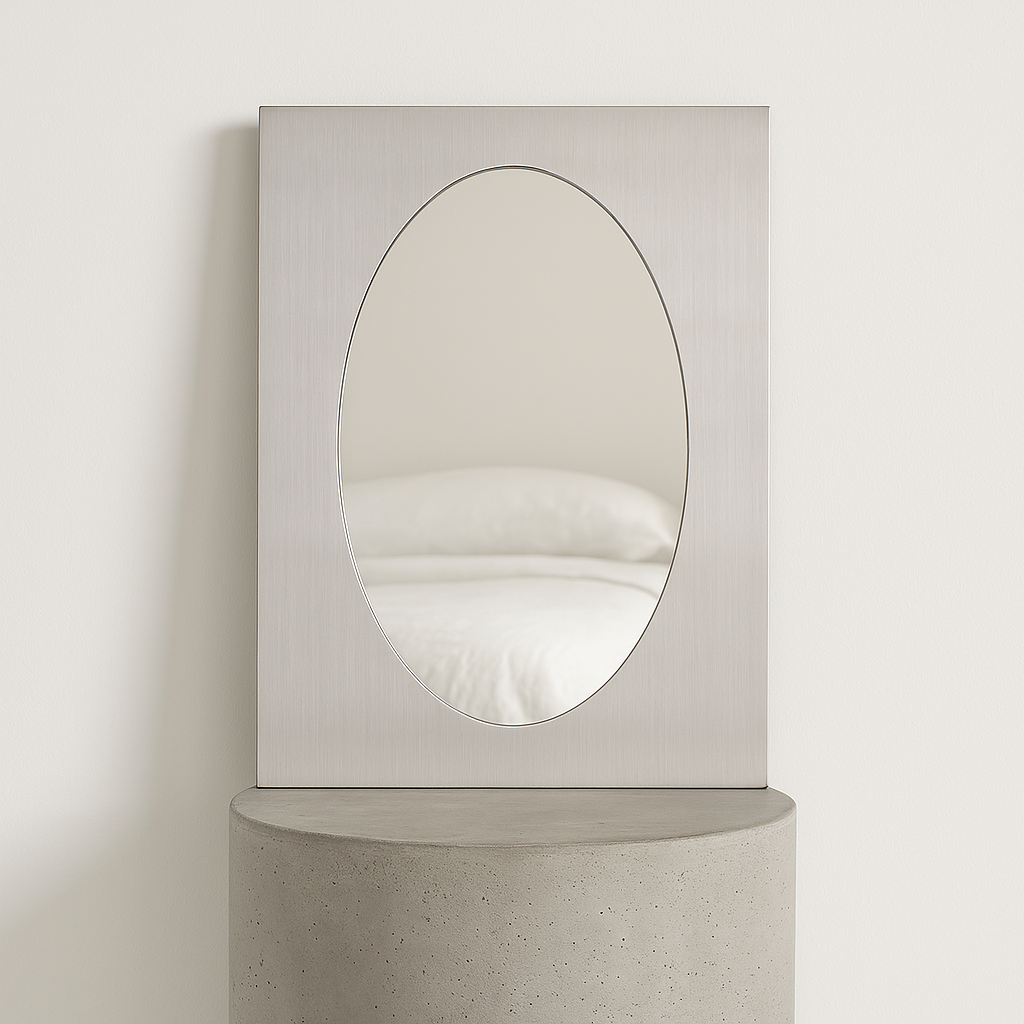Mirrored signs are a sleek way to grab attention and give your space a polished, modern feel. But with so many styles and finishes out there, it can be tough to know where to start. Whether it's for a retail shop, salon, office, or event venue, the right mirrored sign creates a strong first impression. Knowing what to look for like size, edge style, and type of mirror finish makes the selection process a lot easier and ensures the sign actually works with the space instead of just filling it.
Why Mirrored Signs Get Noticed
Mirrored signs attract attention because they reflect light, movement, and the surrounding environment. People notice reflections instinctively, which makes mirrored surfaces more visible than flat or matte signs. They also tend to pause, check their reflection, or take a photo making these signs both eye-catching and interactive.
Businesses use mirrored signs to increase visibility and foot traffic, especially in areas with heavy pedestrian flow. They’re often photographed and shared, which can help with organic exposure.
Polished stainless steel signs from Signs & Mirrors offer a full mirror finish with outdoor durability. They’re commonly used on storefronts, studios, and other customer-facing spaces. For mobile use, mirror A-frame signs are also available useful for drawing in walk-in customers or highlighting temporary promotions. These signs often become part of the space’s visual identity and can double as branding tools in social media content. Their presence can help connect physical locations with online exposure.
Types of Mirrored Signs and Finishes
Mirrored signs come in different materials, formats, and sizes depending on where and how you plan to use them. The most common options include polished stainless steel for outdoor visibility, acrylic mirror for lightweight indoor use, and A-frame boards for sidewalk display. Each type offers a distinct look and level of durability. Below are the main variations available in our catalog.
1. Polished Stainless Steel A-Frame Signs
These signs use high-grade mirrored stainless steel for a clean, eye-catching look. They reflect light and movement, which draws attention at street level. Designed for outdoor use, they’re ideal for cafés, retail entrances, or event spaces. The polished finish adds a sense of clarity and sharpness that works well in dynamic, high-footfall locations.
Product example:

Mirrored A-Frame Sandwich Board Sign - compact, freestanding A-frame with crisp polished panels and clear branding space. Popular for pop-up shops and salon storefronts.

5" Mirrored Stainless Steel A-Frame Sidewalk Sign - slightly larger for stronger presence. Ideal for busy sidewalks and pedestrian areas.
2. Rounded Edge Stainless Steel A-Frame
This version combines the reflective brilliance of a mirrored stainless steel finish with a sleek, rounded edge design for a modern, approachable aesthetic. The curved profile softens the sign’s appearance, making it ideal for refined or architectural environments where signage should complement the surroundings while standing out. Perfect for upscale retail and creative spaces, it balances elegance and visibility.
Product example:

Mirrored Rounded Stainless Steel A-Frame Sandwich Board Sign - features subtle curvature for a polished, contemporary edge. Frequently chosen by fashion retailers, design studios, and boutique storefronts for its sophisticated yet eye-catching look.
3. Acrylic Mirror A-Frame Signs
A lightweight, more portable version made from mirrored acrylic instead of steel. These are best suited for indoor or semi-covered areas like lobbies, market stalls, or event entrances. Acrylic offers a clean reflective surface but is more delicate, requiring careful placement and handling.
Product example:

Mirrored Acrylic A-Frame Sandwich Board - ideal for temporary setups and visual merchandising displays. Can be customized with vinyl lettering.
4. Wall-Mounted Mirror Steel Plates
Flat, polished stainless steel plates designed to be mounted on walls, doors, or desks. Their low-profile, mirror-finish surface adds a sleek visual element while maintaining a clean, minimal look. Commonly used indoors for logos, directional signs, or brand identifiers.
Product example:

Square Forma Mirror (Stainless Steel) - thin profile, brushed edges, and mirror front. Suitable for branding walls, lobby logos, or directional signage.
Mirrored Signage From Signs and Mirrors
At Signs and Mirrors, all mirrored signage shown above is available for order in both standard and custom sizes. We produce A-frame sidewalk signs, wall-mounted mirror plates, and lightweight acrylic signage tailored for use in retail, hospitality, events, and office environments. Whether you're looking for weather-resistant stainless steel signage for outdoor placement or portable acrylic signs for indoor use, we offer a range of options to match your brand style and setting.
You can browse examples of recent projects and installations on our collection or Instagram. Each product is made to order, allowing you to select the right format, material, and finish for your space.
Key Factors to Consider Before Choosing a Mirrored Sign
Before ordering a sign, it’s important to choose the right design and material based on how your space functions. Not every mirrored sign is suitable for every environment size, finish, and mounting method all influence the outcome. Whether you’re using polished steel or mirrored acrylic, the ideal format depends on how the sign will be used and the type of visual impact you want it to create.
1. Location: Indoor vs Outdoor
Where the sign will be installed directly affects which materials are appropriate. Outdoor signage must withstand sun exposure, rain, and temperature changes, making polished stainless steel the most reliable option. For indoor use, you have more flexibility. Lightweight materials like mirrored acrylic can be mounted more easily and repositioned when needed, making them suitable for less demanding environments.
2. Durability and Maintenance
Different materials require different levels of care. Mirror-polished steel surfaces need regular cleaning to remove fingerprints and streaks. Acrylic mirror signs are more prone to scratching and should be handled carefully. In high-traffic areas or commercial settings, it’s best to prioritize sturdy construction and thicker frames to ensure the sign holds up over time.
3. Style and Shape
The visual design of the sign should reflect the overall tone of your brand and space. Signs with flat edges tend to offer a sleek, minimal aesthetic, while rounded shapes create a softer, more modern look that suits design-forward interiors. The shape also influences how well the sign integrates with its surroundings, both visually and physically.
4. Portability and Storage
Some signs are designed to remain fixed, while others are made to be portable. A-frame signs, for example, are foldable and easy to move, making them ideal for storefronts, temporary setups, or events. Wall-mounted nameplates or logo panels, on the other hand, are better suited for permanent branding in office entrances, lobbies, or reception areas.
5. Customization Options
The surface type you choose determines what kind of customization is possible. Consider whether you want a clean mirrored finish, engraved branding, or vinyl lettering. Not all finishes work the same way: vinyl sticks best to acrylic surfaces, while engraving tends to look more refined and permanent on steel. Deciding on the intended content in advance will help guide the material and finish choice.
Common Mistakes to Avoid When Choosing a Sign
Even high-quality signage won’t work as intended if the wrong type is chosen for the space or use case. Here are the most common mistakes businesses make when selecting mirrored signs:
- Using indoor materials outside: Acrylic mirror signs are not made for full outdoor exposure. Using them on sidewalks or building exteriors can lead to fast wear or damage.
- Underestimating cleaning needs: Polished mirror surfaces show fingerprints, dust, and smudges. If your sign is in a high-touch area, plan for regular maintenance.
- Ignoring mounting limitations: Not all signs are meant to hang or stand freely. For example, wall plates require secure mounting, while A-frames need flat ground and storage space.
- Choosing the wrong size: Signs that are too small won’t be noticed. Signs that are too large can overwhelm the space or be hard to position.
- Mismatching style with brand tone: A sleek mirror finish might look out of place in a rustic interior, while a matte steel sign could be too subtle for a modern retail display.
- Skipping customization options: Forgetting to add vinyl graphics, logos, or custom messaging means missing out on brand visibility.
Where Mirrored Signs Work Best: Practical Examples
Mirrored signs are effective when matched correctly with the environment. Below are common use cases where specific formats tend to work best based on visibility needs, foot traffic, and installation conditions.
Retail Storefront on a Busy Street
Outdoor-facing shops benefit from highly visible signage that catches attention quickly. Polished stainless steel A-frame signs work well in this context; they reflect light and motion from the street, making them more noticeable to people passing by. Their weather-resistant build makes them suitable for long-term sidewalk placement.
Reception Area or Office Entrance
In office or studio spaces, signage is often used to mark entry points or reinforce brand presence. Wall-mounted mirror steel signs offer a clean, unobtrusive way to display logos or business names. They fit well into both minimal and design-conscious interiors, especially near desks, doors, or elevators.
Pop-Up Shop or Indoor Market Stall
Temporary retail setups need signage that’s lightweight and easy to move. Mirrored acrylic A-frames are ideal for these scenarios; they provide strong visual impact without the weight of metal, and can be repositioned throughout the day. They work well for lobbies, trade booths, or seasonal displays.
Event Venue or Gallery Space
Events and exhibitions often require signage that is both functional and visually consistent with the space. Freestanding mirrored signs are a practical option for these settings. They can display directions, names, or schedules, and are easy to place without wall mounting. The reflective finish also fits in with curated environments.
Salon or Design Studio in a Pedestrian Zone
Creative businesses that focus on aesthetics often want signage that aligns with their interior and exterior design. Rounded-edge mirrored A-frames offer a softer shape and polished look, making them suitable for salons, design studios, or boutique storefronts. They’re visually distinctive without being overly aggressive in appearance.
Conclusion
Choosing the right mirrored sign involves more than just selecting a reflective surface. Factors like material, size, placement, and style all influence how effective the sign will be in a real-world setting. Polished stainless steel works well for outdoor visibility and durability, while mirrored acrylic is more suitable for lightweight indoor applications. A-frame designs offer portability and are ideal for attracting attention at street level, whereas wall-mounted signs provide a more permanent solution. Hanging formats or freestanding displays can also serve specific spatial or layout needs.
By considering where the sign will be used, how it will be maintained, and how it fits into your brand’s overall visual identity, you can select a mirrored sign that not only looks good but also serves its function effectively. Taking time to match the right format to the right environment ensures better results, both visually and practically. Planning ahead also helps avoid common missteps like using indoor materials outside or selecting a size that doesn't fit the space and ensures your signage performs as expected from day one.
FAQ
What’s the best material for a mirrored sign?
Polished stainless steel is the most durable option, especially for outdoor use. Mirrored acrylic is lighter and suitable for indoor environments or short-term installations.
Can mirrored signs be used outdoors?
Yes, but only if the material is weather-resistant. Stainless steel mirror signs are ideal for outdoor settings. Acrylic mirrors should be used indoors or in covered spaces.
Are mirrored signs fragile?
It depends on the material. Acrylic can scratch or crack more easily if mishandled. Steel signs are sturdier but heavier and may require more secure mounting.
Do mirrored signs need regular cleaning?
Yes. Reflective surfaces show fingerprints, dust, and smudges. Regular cleaning with a soft cloth and non-abrasive cleaner helps maintain a clear, polished look.
Can mirrored signs be customized?
Most mirrored signs can be personalized with vinyl lettering, engraved logos, or custom cutouts. Always check the compatibility of the material with the customization method.
What sizes are available for mirrored signs?
Standard sizes vary by sign type (A-frame, wall plate, hanging). Many providers also offer custom sizing to fit specific use cases or layout needs.
